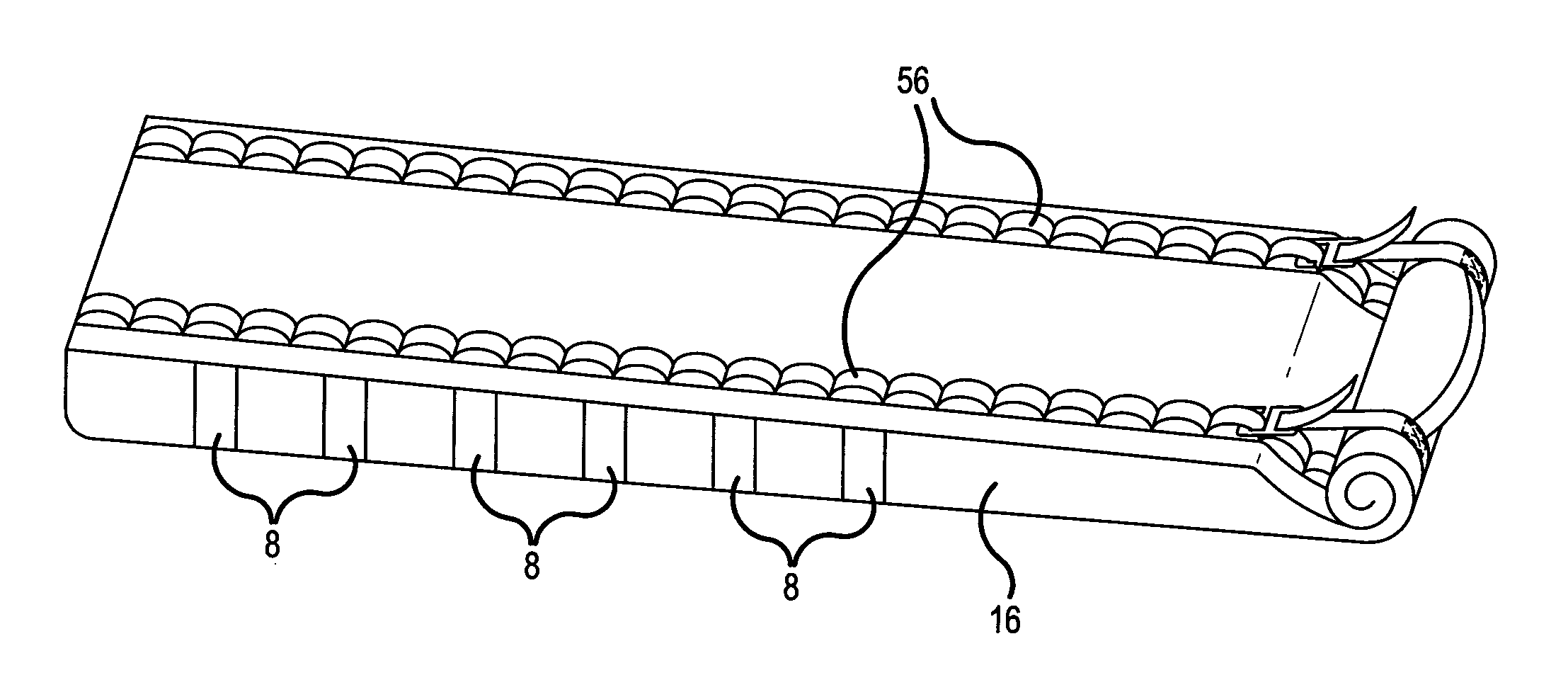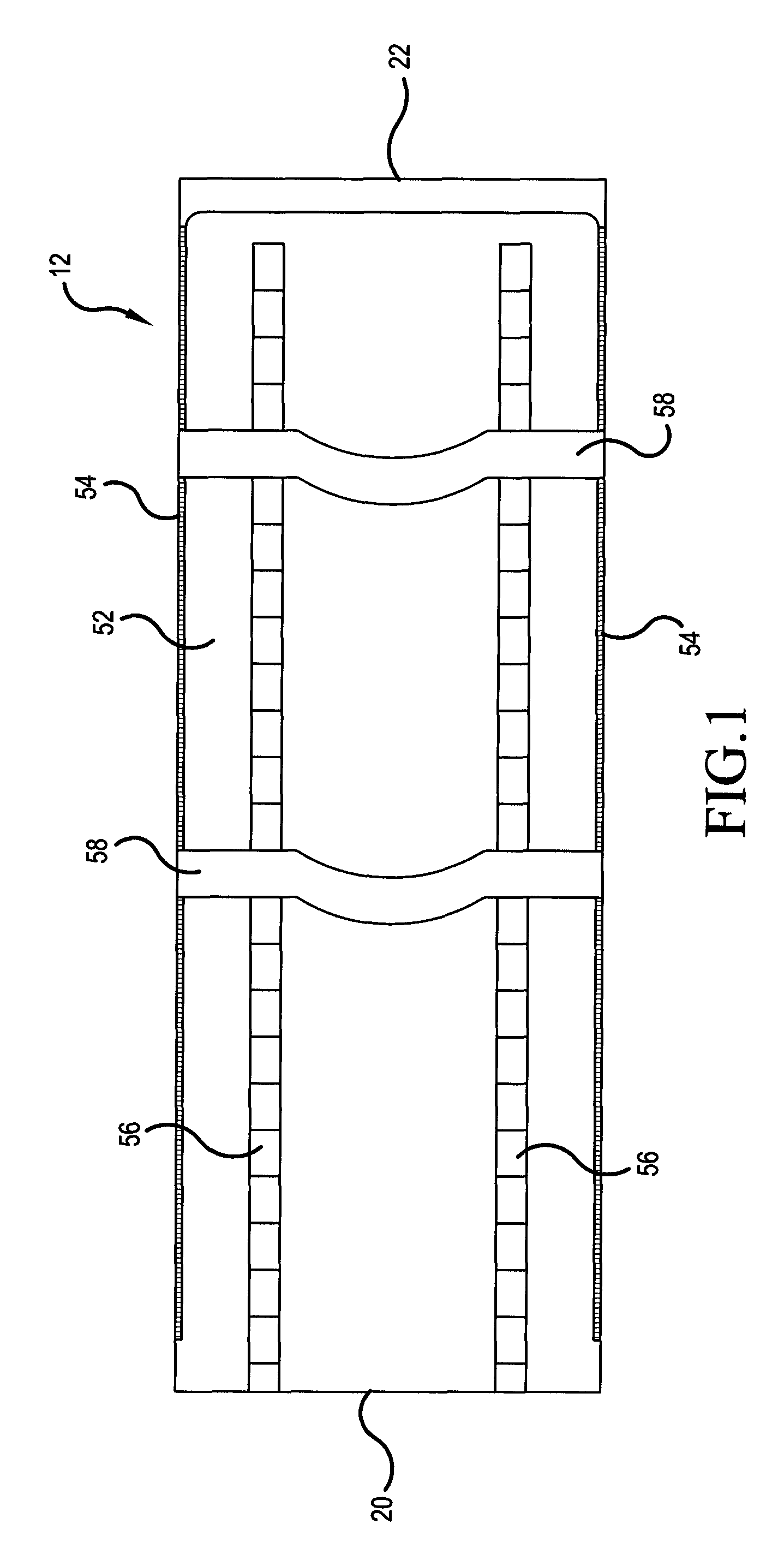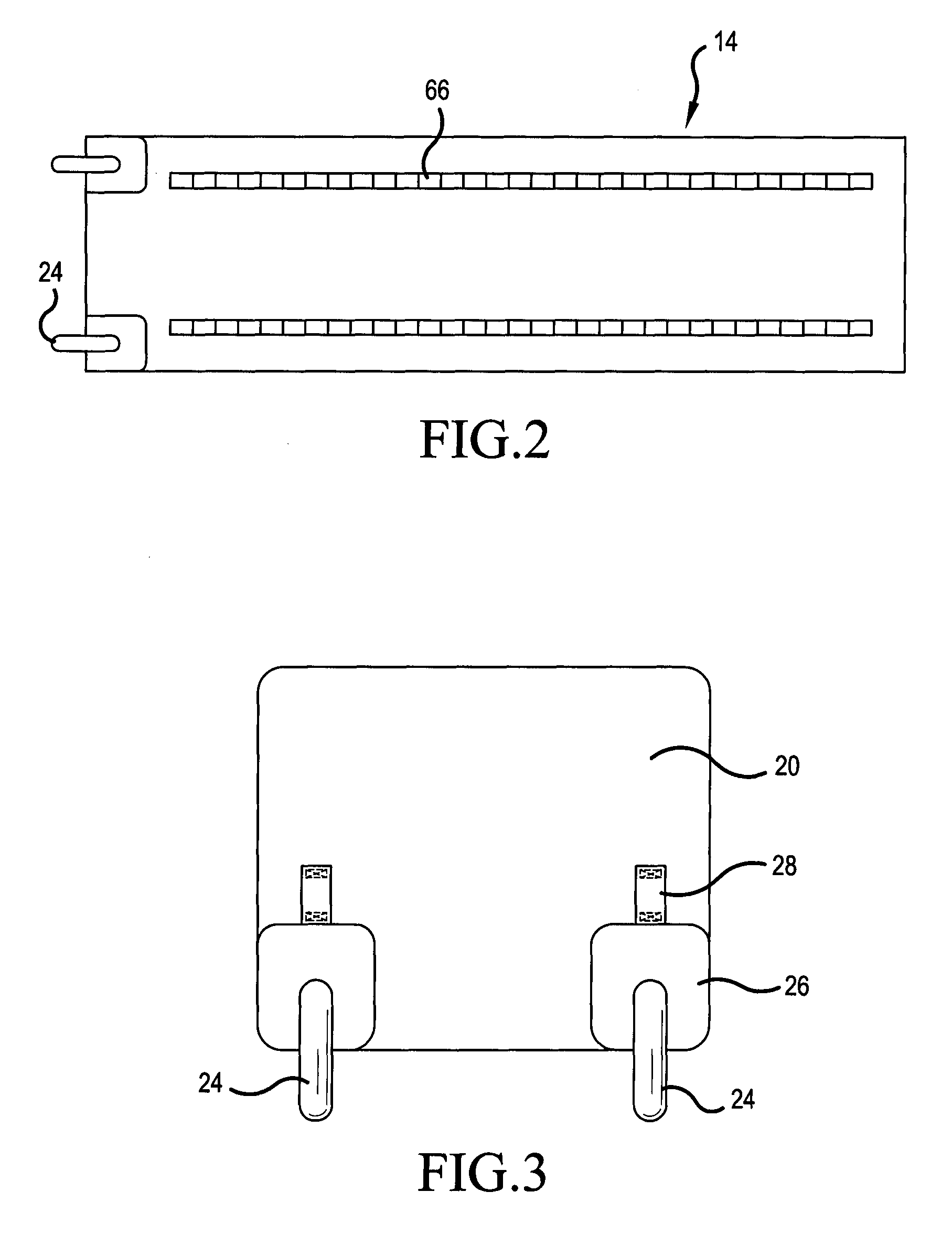Accessory bag having reinforced sidewalls and variable length
a technology of sidewalls and accessory bags, applied in the field of accessory bags, can solve the problems of non-linear bag structure, high wear on the fabric, and more difficult bag transportation for users
- Summary
- Abstract
- Description
- Claims
- Application Information
AI Technical Summary
Benefits of technology
Problems solved by technology
Method used
Image
Examples
Embodiment Construction
[0027]The present invention will now be described with reference to the accompanying drawings, wherein the same or similar elements are identified with the same reference numeral.
[0028]The front wall 12 of the accessory bag is depicted in FIG. 1. The front wall 12 is formed by a front panel 52 secured to the sides of the bag by a pair of zippers 54. The zippers allow the front panel 52 to be pulled back to provide access to the interior of the accessory bag. A pair of handles 58 may extend across the top of the front panel 52. The handles 58 provide an easy grasping point when the accessory bag is lifted in the unfolded state. The handles 58 extend across the front panel 52 and may be formed by straps that are secured to the side walls of the bag. A pair of connection rails 56 extends along the length of the front wall 12. The connection rails 56 are formed by a strip of material forming loops, allowing for the easy attachment of a connection handle 40 (see FIG. 8) anywhere along th...
PUM
 Login to View More
Login to View More Abstract
Description
Claims
Application Information
 Login to View More
Login to View More - R&D
- Intellectual Property
- Life Sciences
- Materials
- Tech Scout
- Unparalleled Data Quality
- Higher Quality Content
- 60% Fewer Hallucinations
Browse by: Latest US Patents, China's latest patents, Technical Efficacy Thesaurus, Application Domain, Technology Topic, Popular Technical Reports.
© 2025 PatSnap. All rights reserved.Legal|Privacy policy|Modern Slavery Act Transparency Statement|Sitemap|About US| Contact US: help@patsnap.com



